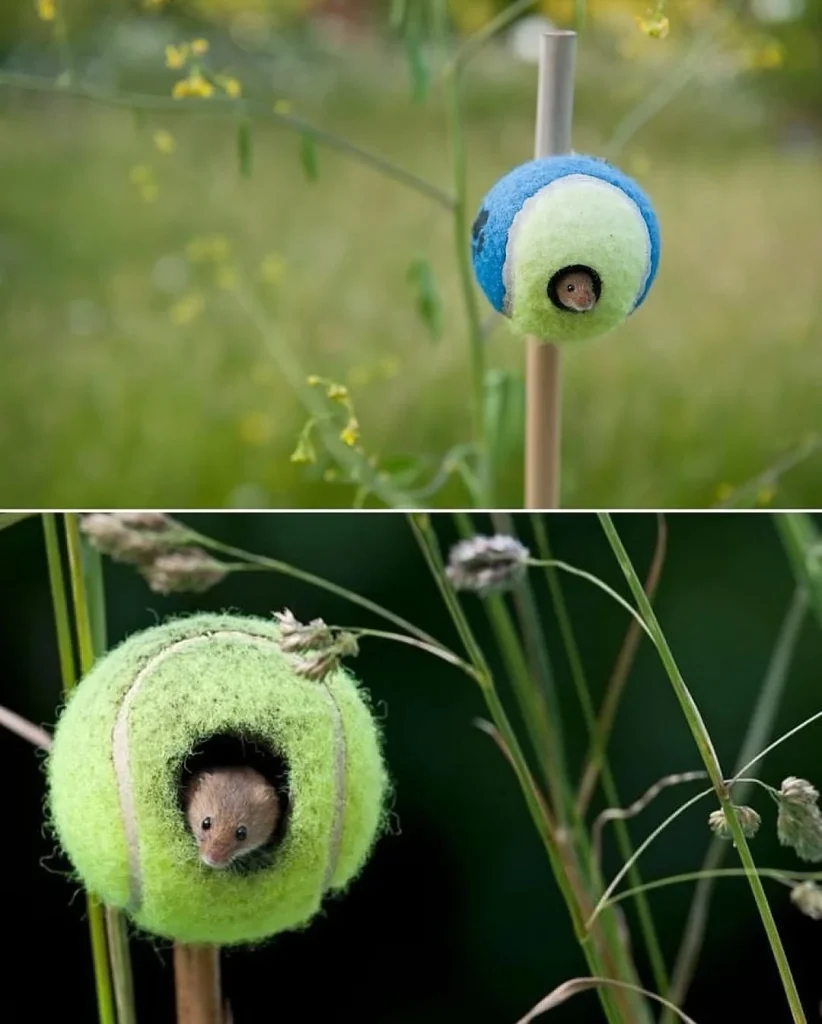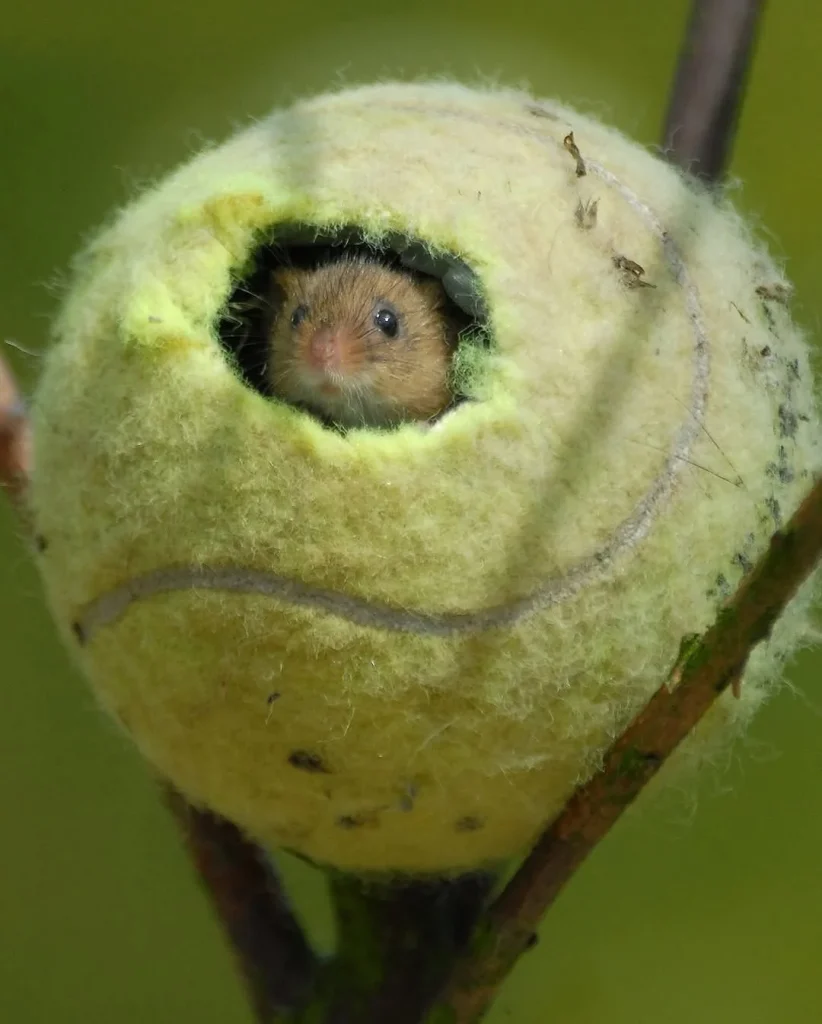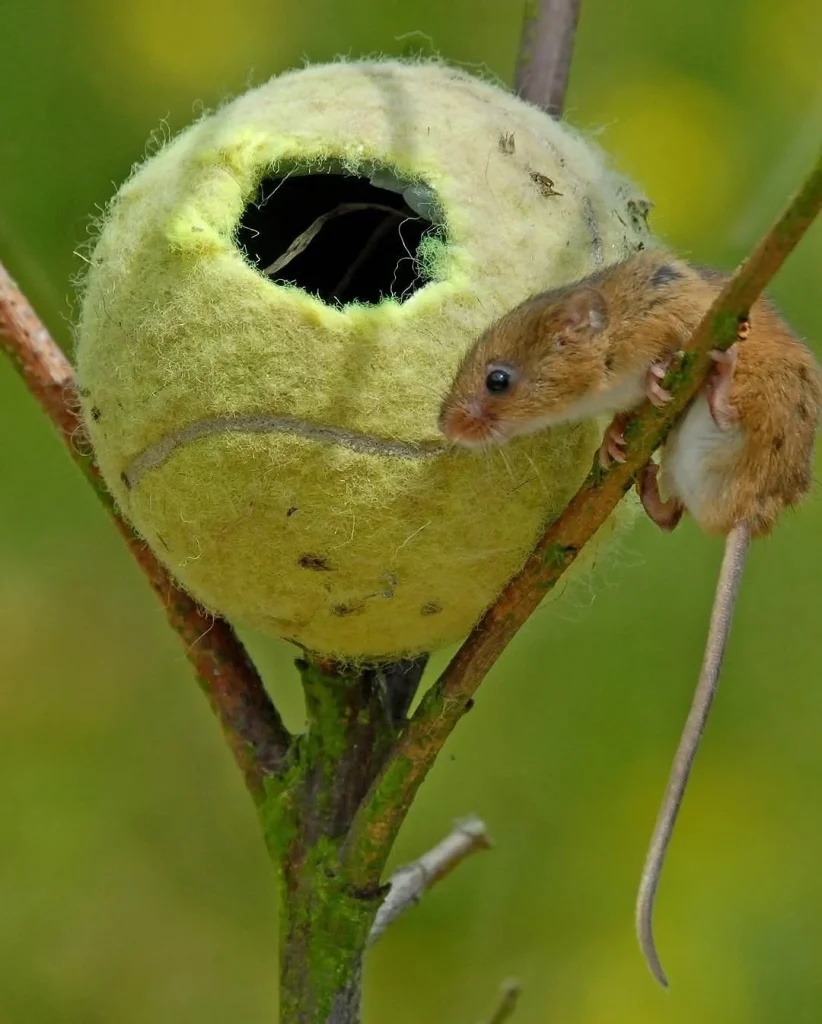Every July, as champions are crowned at Wimbledon and Centre Court falls silent, thousands of yellow tennis balls face their final match point. But rather than landing in the bin, these fuzzy relics of sporting greatness are now scoring a second life, as real estate. Yes, you read that right. Thanks to an ingenious conservation initiative, Wimbledon’s used tennis balls are being turned into cosy, eco-friendly homes for one of Britain’s tiniest mammals: the harvest mouse.
Tiny Mice, Huge Problem
The harvest mouse, a beloved native species of the UK, weighs no more than a 20-cent coin and could nap comfortably in a matchbox. But don’t be fooled by their cuteness, their existence is hanging by a thread. Habitat destruction, agricultural changes, and predator exposure have put serious pressure on their populations.

These little critters thrive in wild grasslands and hedgerows, where they build delicate spherical nests among tall grasses. But as modern farming has steadily erased their natural environments, conservationists have had to get creative—enter: tennis balls.
How to Turn a Ball into a Bungalow
The magic starts after the final Wimbledon match has wrapped. With over 55,000 tennis balls used across the tournament, there’s no shortage of potential mouse condos. Rather than sending them to landfill, these balls are collected and upcycled by wildlife charities and organisations like the British Wildlife Centre.

Volunteers carefully slice or drill openings into the balls, hollow them out, and then place them in grassland areas and hedgerows. The ball’s rubbery shell and fuzzy felt naturally offer brilliant insulation and weather protection, keeping the mice warm in winter, cool in summer, and safe from lurking predators. It’s survival, served with a backhand.

The idea is both low-cost and high-impact, allowing conservation groups to give these mice a safe nesting space while reducing sporting waste. It’s the kind of win-win that would make any environmentalist fist-pump.
A Grand Slam for Conservation
This clever upcycling effort isn’t just about cute rodents finding a snug new address, it’s about smarter environmental solutions. In a time where wildlife habitats are rapidly vanishing and landfills are overflowing with synthetic waste, this initiative is a shining example of practical eco-innovation.

The repurposed tennis balls are easy to deploy, withstand harsh weather, and blend naturally into grassy environments. Unlike traditional nesting boxes made of wood or plastic, they’re lightweight, durable, and already come with a soft interior. It’s almost as if the humble tennis ball was waiting for a post-match encore.
And for the public, the story brings unexpected joy. Suddenly, Wimbledon fans can cheer not just for aces and volleys, but for baby mice curling up in championship-grade comfort.
When Sport Serves More Than Points
This story is proof that sustainability doesn’t always need a million-dollar budget or flashy tech. Sometimes, it’s as simple as looking at what’s already there, like a pile of discarded tennis balls, and imagining a different future for them.
It’s a small idea with mighty results. The next time you watch Wimbledon and see that little yellow ball zip across the court, know this: its journey might not end with the trophy ceremony. It might end with a harvest mouse curled up inside it, safe, sound, and utterly adorable.



























































